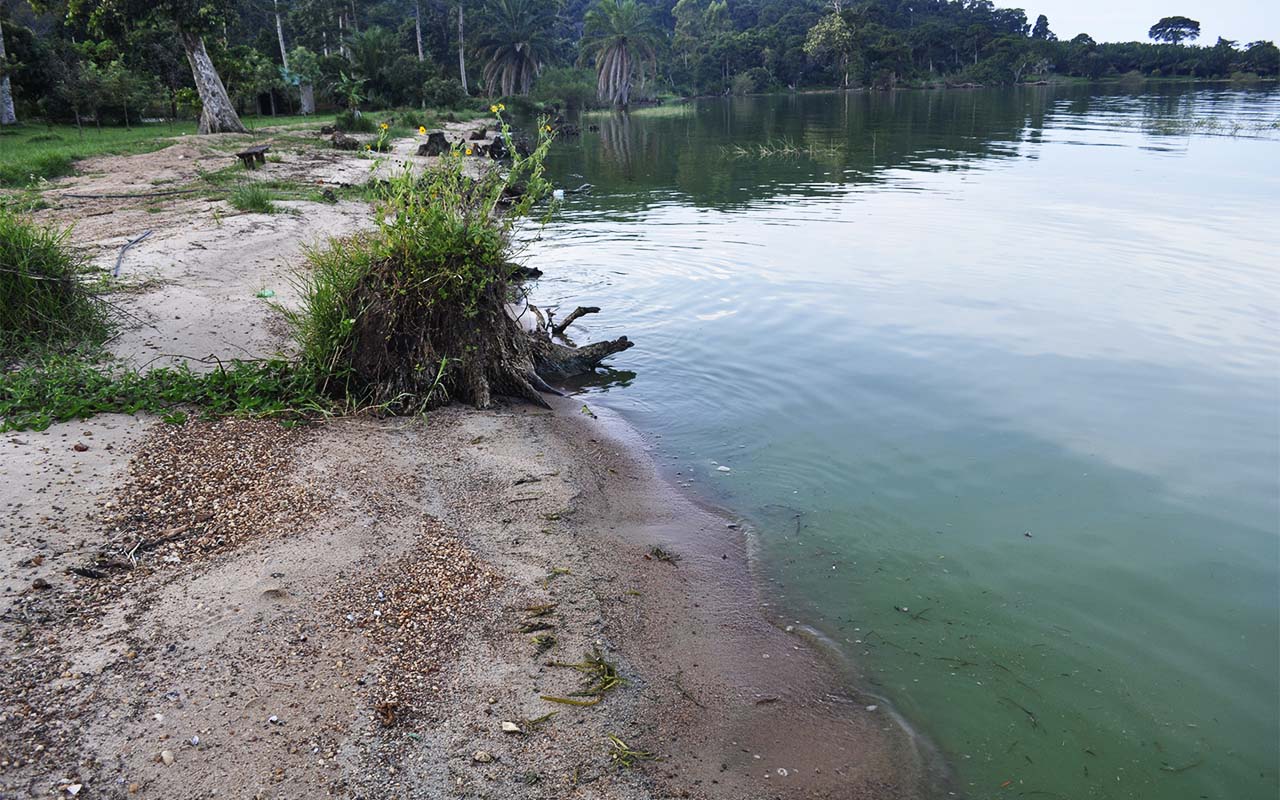Worry as Lake Victoria turns green with killer toxins

An abnormal coluor of water on the shores of Lake Victoria in Entebbe. A new research indicates that this is due to the rise of harmful algal blooms on the water body. PHOTO/IVAN WALUNYOLO
What you need to know:
- Numerous industries in Uganda, Kenya, and Tanzania discharge untreated waste into Lake Victoria.
Scientists have raised fresh concerns over the deteriorating state of Lake Victoria, Africa’s largest freshwater lake, which is turning visibly green due to high chemical concentrations.
A study by researchers from the University of Michigan and Bowling Green State University in the United States has identified harmful algal blooms as the cause of the lake’s abnormal colour.
The report states that the specific algal bloom, cyanobacteria, results from a process known as eutrophication.
According to the study, a century of human activity has sent nutrients into the lake, leading to the proliferation of algae that has turned the water green. Observations and photographs taken at Entebbe, Uganda, this week confirmed the presence of the green water.
While cyanobacterial harmful algal blooms (CyanoHABs) occur in many basins of the lake, they are particularly concentrated in Kenya’s shallow Winam/Nyanza Gulf.
The report links agricultural runoff, sewage, and industrial wastewater to the problem.
Additionally, practices such as slash-and-burn agriculture, biomass burning, and industrial emissions contribute to atmospheric pollution that eventually settles in the lake.
“Climate change has also played a role. Blooms are becoming more widespread worldwide because rising temperatures promote cyanobacterial growth, and more intense rainfall delivers nutrients from the landscape,” the researchers stated in an interview first published in The Conversation.
It remains unclear how Uganda’s National Environment Management Authority (Nema) will respond to these latest findings.
Previously, Nema had initiated evictions from wetlands, which act as natural catchment areas and help purify water before it enters the lake.
The agency’s Executive Sirector, Mr Akankwasa Barirega, did not respond to calls regarding its plans to combat the lake’s pollution.

Shores of Lake Victoria at Mweena landing site that has been invaded by the green algea. Photo/David Sekayinga
Spanning Uganda, Kenya, and Tanzania, Lake Victoria supports nearly 47 million people who rely on it for fresh water, fishing, and other livelihoods.
The study identified Microcystis, a type of algae abundant in the Winam Gulf, as a producer of high levels of microcystin, a liver-damaging toxin.
“This toxin can kill livestock, wildlife, and humans, particularly those with weakened immune systems. In Winam Gulf, its concentration often exceeds the health limits set by the World Health Organisation,” the report stated.
In Kampala, Mr Sowedi Sewagudde, the Commissioner for International and Transboundary Water Affairs at the Ministry of Water and Environment, acknowledged that nutrient accumulation in the lake is the driving factor.
“The key nutrients causing the lake’s greening are phosphorus and nitrogen. These create an environment conducive to algal growth, turning the lake green,” he said.
He added: “As a government, we are taking steps to address this issue through various interventions. One such effort is supporting farmers in adopting smart agricultural practices like mulching to reduce sedimentation and soil erosion from their fields into rivers feeding Lake Victoria.” Mr Sewagudde noted that wetlands surrounding the lake, which naturally filter pollutants, have been severely degraded.
“As a government, we are evicting individuals who have encroached on wetlands. This has been done in Lubiji and other areas, including Munyonyo, where communities continue to encroach on wetlands. We believe these interventions will help reduce the inflow of pollutants into the lake and restore the wetlands’ ability to filter contaminants before they reach the lake,” he said.
Mr Sewagudde also highlighted industrial pollution as a major concern. Numerous industries in Uganda, Kenya, and Tanzania discharge untreated waste into the lake.
“We are enforcing regulations requiring industries to treat their effluent to government-mandated standards. The East African Community—comprising Uganda, Kenya, and Tanzania—has agreed on effluent standards. The permitting system has been strengthened to ensure compliance,” he said.

Shores of Lake Victoria at Mweena landing site that has been invaded by the green algea. Photo/David Sekayinga
Costs of water treatment
Although the National Water and Sewerage Corporation (NWSC) did not respond to queries regarding the current cost of treating lake water, previous data from 2019 indicated that up to Sh975 million was spent monthly on water treatment at the Ggaba facility.
At that time, the NWSC’s production manager, Mr Andrew Muhwezi, said the treatment costs had doubled from Sh487.5 million due to increasing pollution levels.
Pollution accounted for approximately Sh357.5 million of this increase, while the rest was attributed to the growing demand for clean water driven by population growth.
Mr Sewagudde acknowledged that rising pollution levels have significantly increased the cost of making lake water safe for human consumption, though he did not provide current figures.
“The NWSC has had to relocate intake points to access cleaner raw water. For example, we had to go all the way to Katosi [Mukono] to secure better-quality water for treatment. However, we believe that with ongoing interventions, we can mitigate this challenge and ensure water quality meets WHO standards,” he said.




